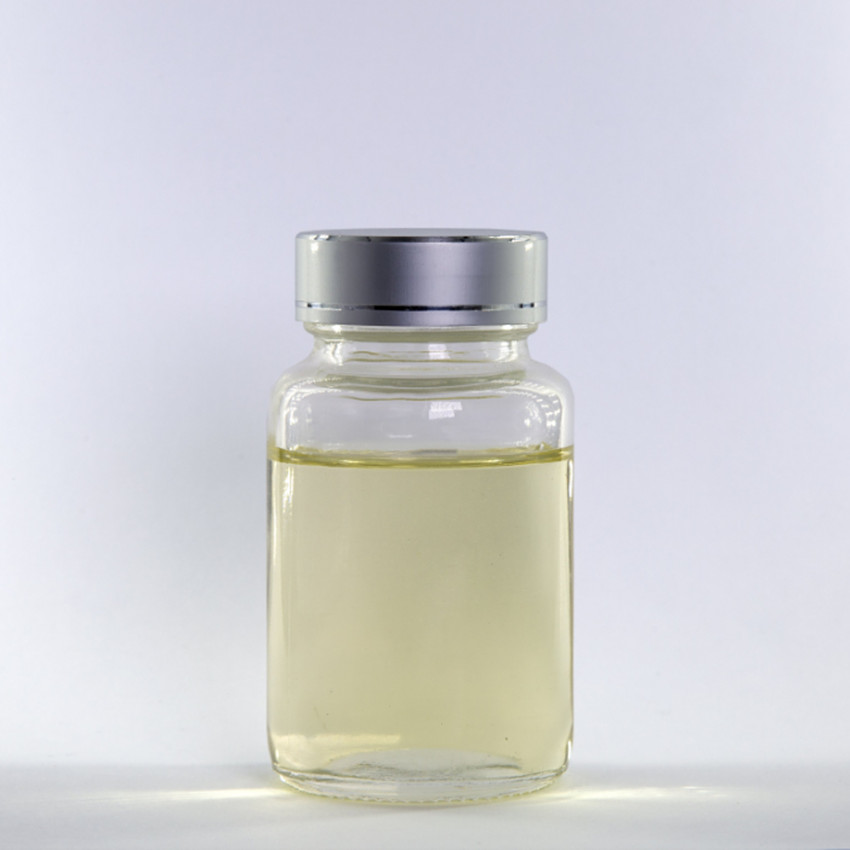Trimethylstearylammonium Chloride 112-03-8
Product Detail
| CAS number | 112-03-8 |
| Molecular formula | C21H46ClN |
| Molecular weight | 348.06 |
| EINECS Number | 203-929-1 |
| Storage conditions | Inert atmosphere, Room Temperature |
| PH value | 5.5-8.5 (20℃, 0.05% in H2O) |
| Water solubility | Soluble in water 1.759 mg/L @ 25°C. |
| Maximum wavelength | (λmax) λ: 225 nm Amax: ≤0.08λ: 260 nm Amax: ≤0.06
λ: 280 nm Amax: ≤0.04 λ: 340 nm Amax: ≤0.02 BRN: 3917847 |
Synonyms
1831; TC-8; Octadecy trimethyl ammonium chloride; OCTADECYLTRIMETHYLAMMONIUM CHLORIDE; STAC;stearyl trimethyl ammoium chloride; STEARYLTRIMETHYLAMMONIUM CHLORIDE; Steartrimonium chloride
Description
Octadecyltrimethylammonium chloride has good compatibility with cationic, nonionic and amphoteric surfactants, and has excellent penetration, softening, emulsifying, antistatic, biodegradable and bactericidal properties.
Application
Octadecyltrimethylammonium chloride has good chemical stability and is widely used in hair conditioners, fabric softeners, fiber antistatic agents, silicone oil emulsifiers, asphalt emulsifiers, organic bentonite modifiers, disinfectants, Protein flocculants and water treatment flocculants for biochemicalbook pharmaceutical industry, etc.
Properties
This product is light yellow colloidal liquid. The relative density is 0.884, the HLB value is 15.7, the flash point (open cup) is 180℃, and the surface tension (0.1% solution) is 34×10-3N/m. When the water solubility is 20℃, the solubility is less than 1%. Soluble in alcohol. It has excellent stability, surface activity, emulsification, sterilization, disinfection, softness and antistatic properties.
Change Controls
Changes are controlled according to the procedure. Based on the impact and risk and severity, changes are classified as Major, Minor and Site. Site changes have slight impact on safety and quality of product, and therefore do not need approval and notification to the customer; Minor changes have moderate impact on safety and quality of product, and need to notify the customer; Major changes have higher impact on safety and quality of product, and need approval by the customer.
According to the procedure, change control is started with change application in which change details and rational for the change are described. The evaluation is then performed following the application, which is done by change control relevant departments. Meanwhile, the change control is classified into Major level, General level and Minor level. After appropriate evaluation as well as the classification, all level change control should be approved by QA Manager. The change control is executed after approval according to the action plan. The change control is finally closed after QA confirms the change control has been appropriately implemented. If involving client notification, the client should be notified timely after change control approved.




